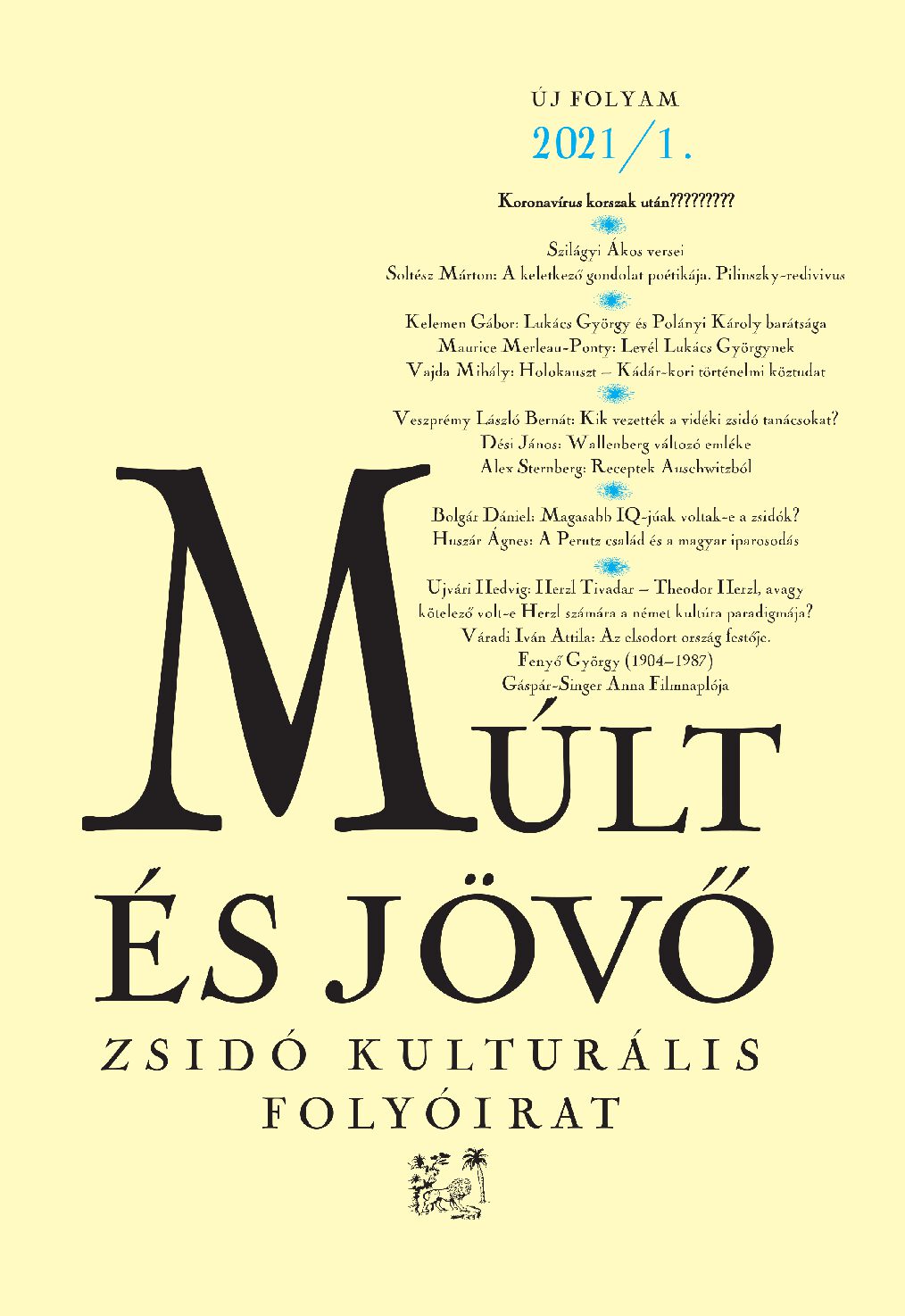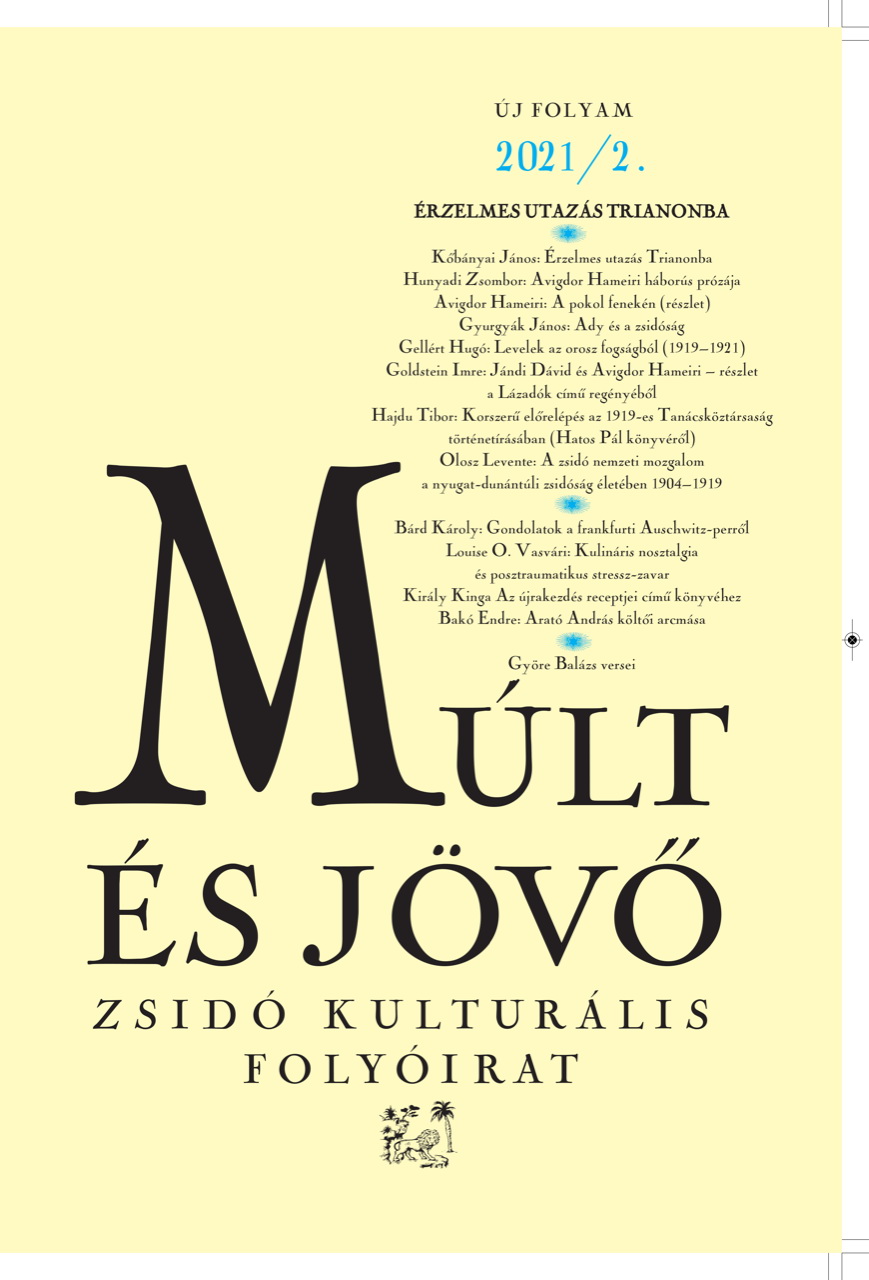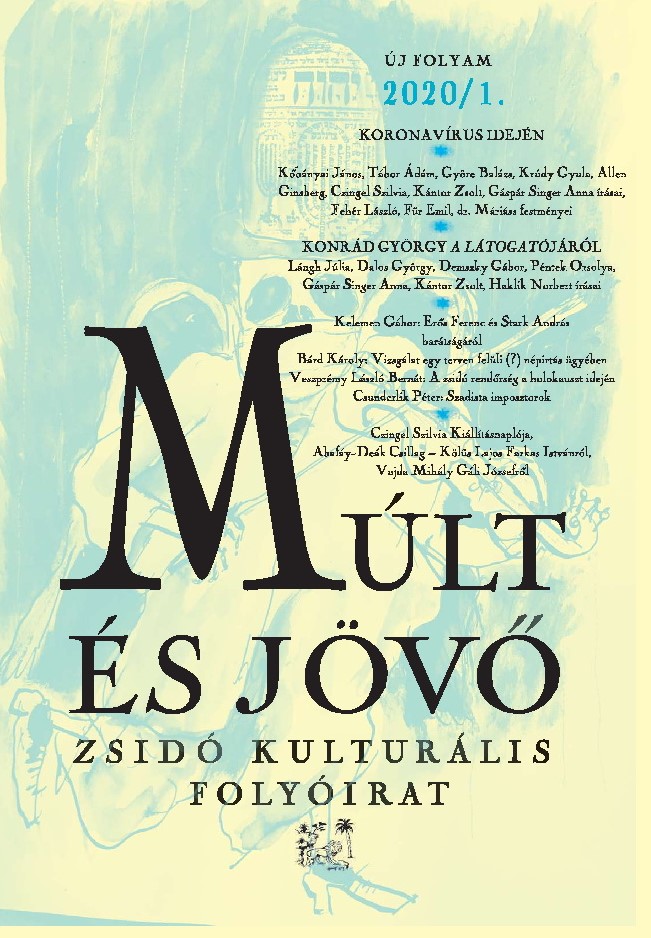
Vizsgálat egy terven felüli (?) népirtás ügyében. Tanulmány Veszprémy László Bernát könyvéről
Veszprémy László Bernát Gyilkos irodák. A magyar közigazgatás, a német megszállás és a holokauszt. Jaffa Kiadó, Budapest, 2019
More...We kindly inform you that, as long as the subject affiliation of our 300.000+ articles is in progress, you might get unsufficient or no results on your third level or second level search. In this case, please broaden your search criteria.

Veszprémy László Bernát Gyilkos irodák. A magyar közigazgatás, a német megszállás és a holokauszt. Jaffa Kiadó, Budapest, 2019
More...
Eddy de Wind: Auschwitz, végállomás. Egy túlélő naplója a haláltáborból. Fordította: Alföldy Mari. Athenaeum Kiadó, Budapest, 2020. 210 p. 3999 Ft
More...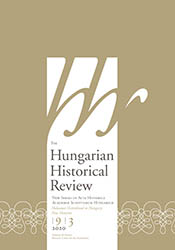
Military forced labor service was introduced in Hungary during World War II. Men who were unreliable from the aspects of origin, religion, nationality or politics were conscripted for forced labor. Initially, forced laborers constructed primarily military objects on the home front, while later they were also dispatched to the battlefield. They had no weapons or uniforms, their provisions were poor and often they had to do building or mine clearing in the most dangerous areas. Hungary sent a total of approximately 6,000 forced laborers to work in the southern operational territories in 1943 and 1944. They had to undertake forced labor in the mining district of Bor in Yugoslavia, which was under German occupation. The majority were Jews, but there were also Jehovah’s Witnesses, Reform Adventists and Nazarenes. They lived under Hungarian military supervision and worked under German management. The locations of forced labor, the durations of time spent in the mining district, the experienced sufferings, etc. were very different. The forced laborers themselves were also different, for example with regard to their origins, occupations, and age. Several Jewish forced laborers wrote diaries and some of them managed to take those home. Later diaries written in Bor had a particular fate. Some were lost for a time or have remained in fragments, while others with important additions were deposited in archives or taken abroad by the diarists. All the diaries analyzed in the study testify to the survival of their writers. However, they mostly bear witness to the everyday life of forced labor service in Bor (otherwise difficult to learn about) and the behavior of those who held them, as well as the forced laborers’ sufferings, faith and hope. At the same time, they speak about the entirety of forced labor in Bor alongside its personal stories. The diaries are ego-documents, yet also historical sources. Their factual descriptions and subjective approaches augment our knowledge gained in the past. The six diaries written in Bor and analyzed in this study are personal confessions with significant source value.
More...
In this paper, I examine ego-documents created by two Hungarian deportees regarding the Bergen-Belsen concertation camp: Margit Holländer’s diary and Magda Székely’s letters to her father, Károly Székely. Holländer’s diary sheds light on two periods of Bergen-Belsen. The letters offer insights into experiences in two different parts of the camp at the same time. These sources include details about the everyday lives, thoughts, perceptions, and feelings of the inmates in the most extreme space of persecution. I argue that, with its focus on the attachment to place, by which I mean the emotional bond between person and place (an important concept in environmental psychology), Holländer’s diary reveals how she reflected on the different spaces in the camp and how her emotions regarding the physical and natural environment shifted depending on the situations of camp life. Magda Székely’s letters to her father reveal how the different sectors of the camp influenced the emotional bonds between father and daughter. I also argue that the attachments that these individuals seem to show to some of the sectors of the camp suggest that there were emotionally “positive places” in an otherwise negative environment. The illegal world of the camp, the secret act of letter writing, meetings in the “positive places,” and the exchange of goods on the black market are all indications of the very limited freedom of space usage, which continued after the liberation of the camp.
More...
This article provides a comparative and intersectional analysis of East-Central European Holocaust testimonies by women survivors narrated in writing at the time of the Shoah and recorded five decades later by the USC Shoah Institute’s Visual History Archive. The comparison explores both the continuities and changes particularly in the beginning and end of the persecution, which are usually associated with the terms “occupation” and “liberation.” I suggest that these conceptualizations prominent in the archive collide with survivor testimonies from the region in that survivors do not interpret Hitler’s rise to power and the German occupation as formative events of the persecution against the local Jewry. Further, I provide a typology of liberation narratives arguing for a multiplicity of interpretation based on survivor narratives countering the popular consensus of liberation as a carefree moment in time. Lastly, I conclude that the regional approach is particularly useful in understanding Holocaust memory in Hungary today as it is conducive to highlighting the specific relation of the global to the local.
More...
The paper focuses on Hungarian Jews who had been deported from Hungary to Bergen-Belsen and ended up in a Jewish displaced persons camp (hereinafter referred DP) before the liberation near the settlement of Hillersleben in the Magdeburg district of Sachsen-Anhalt, one of the states of Germany from April to September, 1945. In the first section of this paper, I explore the historical framework of this Hungarian group based on the current historiography and some narrative sources. In the second (main) part, I offer a case study in which I analyze the spatial experiences of György Bognár, a survivor of this aforementioned group. This camp alone did not play any special role from the perspective of Hungarian survivors. On the contrary, it provides evidence of the typical experiences of Jews in Germany in 1945. Giving voice to ego-documents and mainly to Bognár’s diary, I offer an account of how a 16-year old Hungarian Jew perceived and described the space in which he lived in this “half-life” between concentration camp and liberation. Primarily by using his diary entries, I attempt to offer insights into the spatial experiences of the DPs, though I also draw on other sources. I also explore the main markers of the maps he drew of the camp. I compare these sources with the notes I took during a visit to the site in 2016. My primary goal is to use spatial analyzes of the available narrative sources to further an understanding of how someone in one of the DP camps perceived his surroundings. In the last section, I reflect briefly on how the territory and the space of the former DP camp changed function after the camp was closed.
More...
This article focuses on a denazification procedure within the professional group of the Budapest butchers. Through the retelling of wartime anti-Jewish incidents and other conflicts, these processes reveal a complex picture of how a certain professional group tried to cope with the upheavals of the war and the attempts of outside interventions. In the framework of the anti-Jewish exclusionary atmosphere of the epoch, I investigate questions about professional competition, leadership, respectability, professionalization, and the marginalization of Jewish professionals. By answering these questions, I reconstruct a wartime internal dynamism within the butchers’ trade, where meat gradually became a scarcity, and therefore ousting Jewish colleagues was understood more and more as an urging necessity. In these circumstances, I am interested in the ways of solidarity and animosity showed by the Budapest butchers towards persecuted colleagues and towards Jews in general. By using a micro-historical method, I detail the professional problems of Budapest butchers, and I explain how the denazification check interestingly took over some functions of the “master’s exam,” after the Second World War.
More...
This article provides an overview of German research on the Holocaust in Hungary. Its first part sketches four larger contexts of the professional study of the Holocaust in Germany to show why, though it was one of the major chapters of the genocide against European Jews, the Holocaust in Hungary has not emerged as a preoccupation among German historians. The second and longer part examines the premises, conclusions, and reception of the three most relevant German-language monographs on the Holocaust in Hungary and immediately adjacent subjects. I argue that the Holocaust in Hungary has only been discovered in German historiography as a result of larger shifts starting in the mid-1980s, and the number of specialists in Germany dedicated to its study and the level of cooperation between scholars in the two countries has remained surprisingly limited. Nonetheless, German historiography has been responsible for path-breaking and widely discussed monographs regarding Hungary, with the publication of Götz Aly and Christian Gerlach’s Das letzte Kapitel in particular serving as the subject of a transnational quarrel among historians in the early years of this century. I close with the stipulation that, with the further development of all-European perspectives on the Holocaust and growing interest in the last stages of World War II, the Hungarian case might be a more frequent subject of discussion in scholarly contexts that would ensure increased international visibility and attention in the future.
More...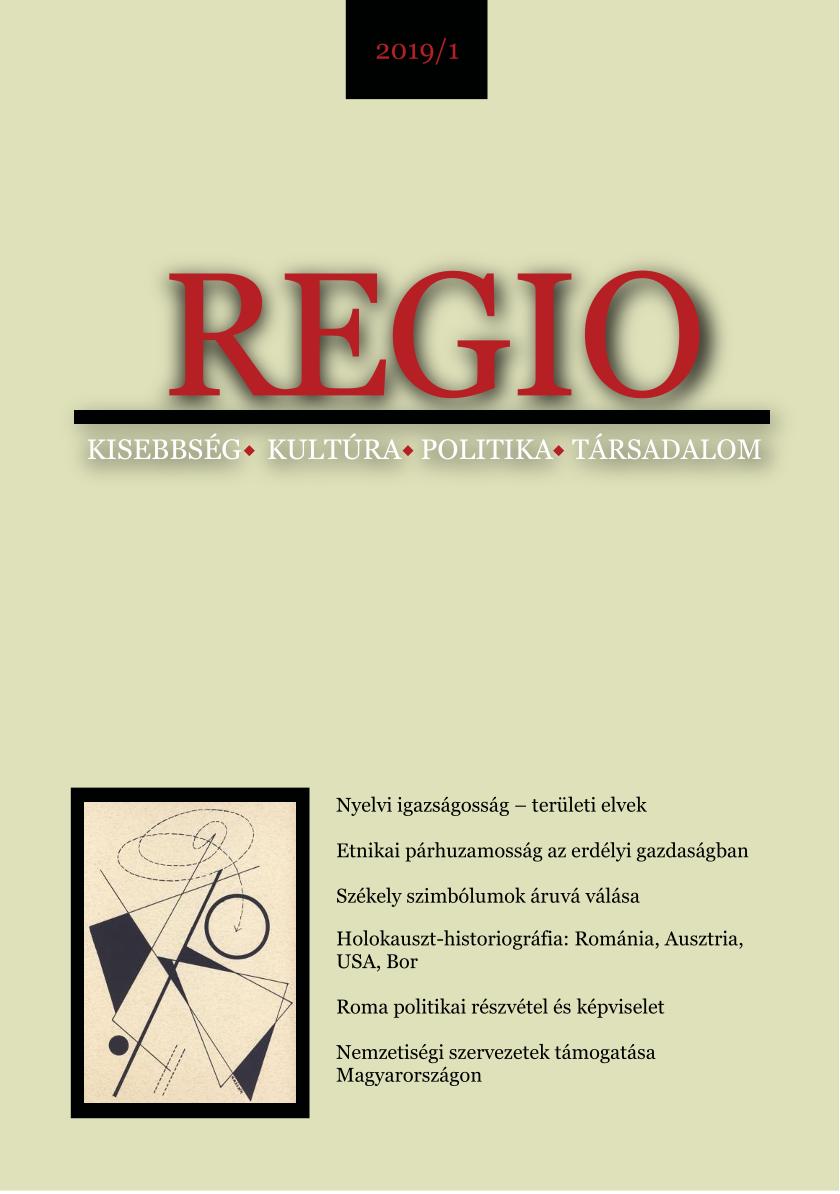

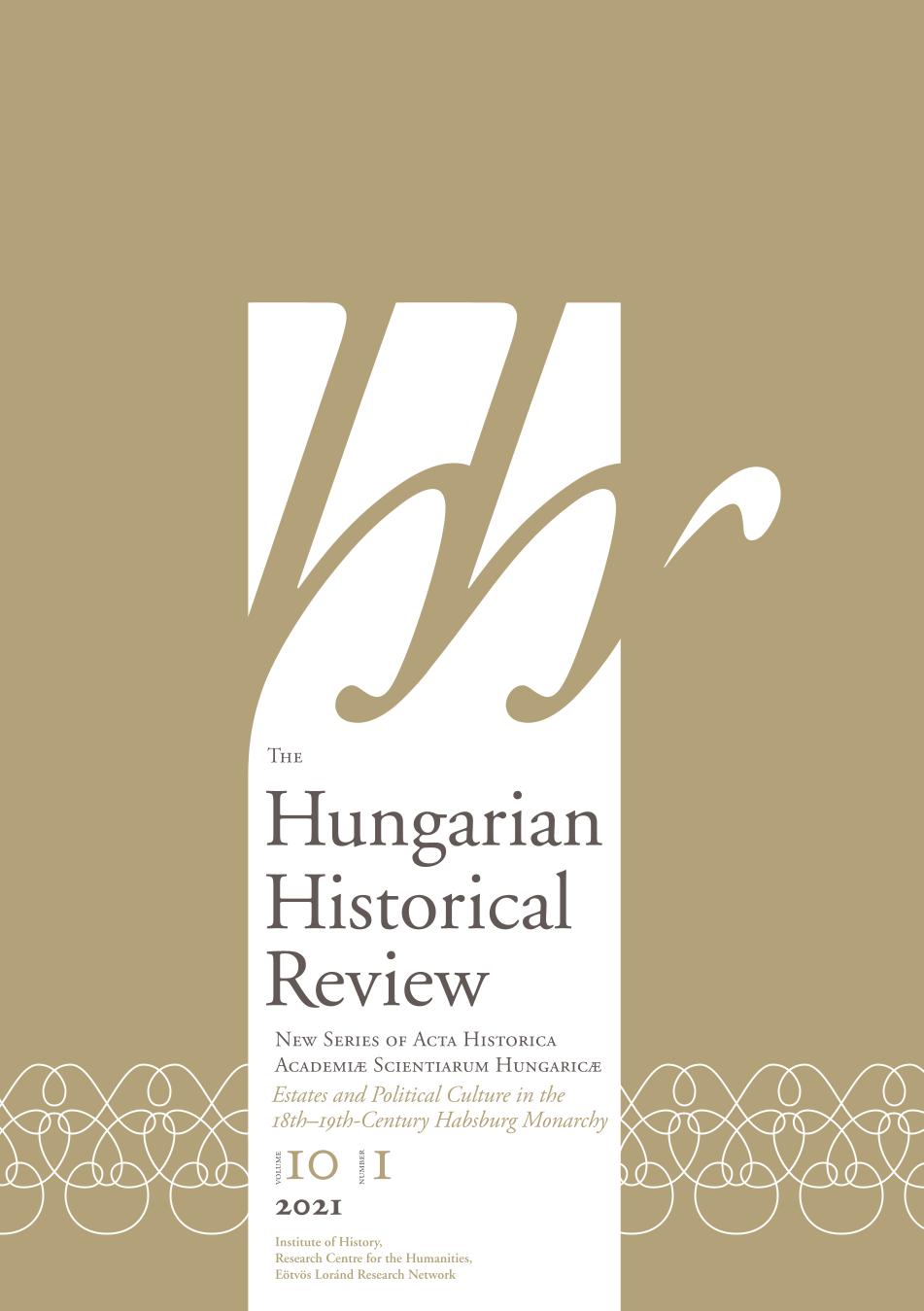
Genealogies of Memory 2020 – The Holocaust between Global and Local Perspectives. Conference report.
More...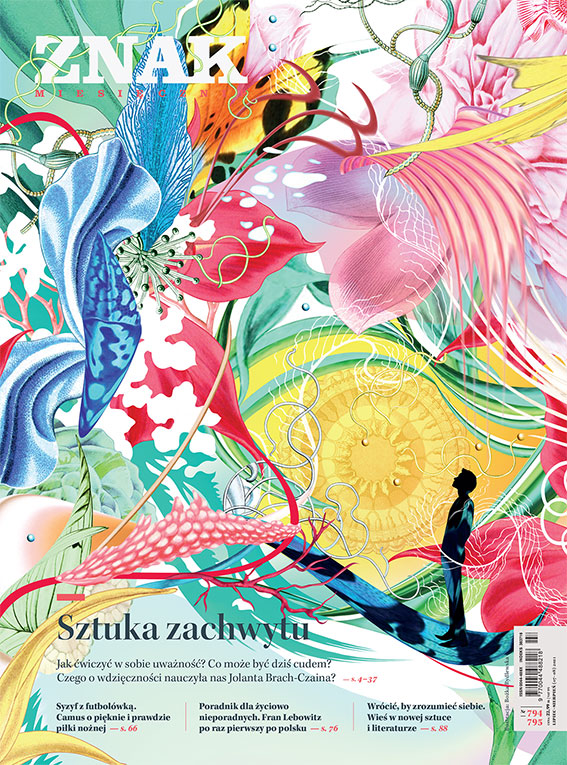
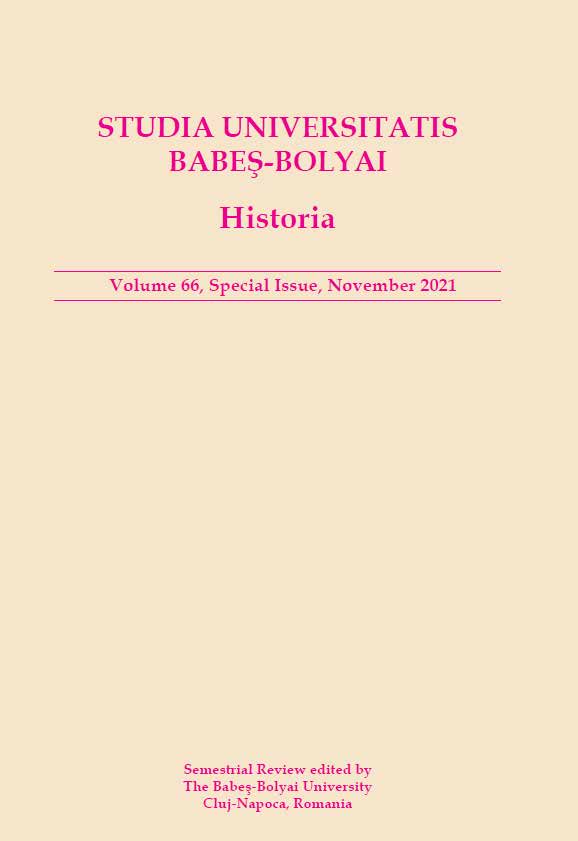
In this paper, I analyze the notion of time and space in the small factories of the Warsaw Ghetto, commonly known as shops, through a close reading of the diaries written in the Ghetto by Emanuel Ringelblum and Reuven Feldschu Ben Shem. In the Warsaw Ghetto of July 22, 1942, there were but two options for Jews: being deported to Treblinka or "postponing" the death sentence by becoming a shop worker. As long as one worked in a shop, one's life ー and only one's life, not his family's ー was spared for a while. The authors of the diaries who will be presented, both worked in the shops, and in their writings, they exposed how space and time became significant oppressing factors. As I will show, every familiar perception was challenged in this space of an imposed slave-like existence.
More...![“Glaube an den Menschen” [Faith in humanity: A diary from Bergen-Belsen]](/api/image/getissuecoverimage?id=picture_2021_64432.jpg)
“Glaube an den Menschen” [Faith in humanity: A diary from BergenBelsen]. By Jenő Kolb. Edited by Thomas Rahe and Lajos Fischer. Translated from the Hungarian by Lajos Fischer. Bergen-Belsen – Berichte und Zeugnisse 7. Göttingen: Wallstein Verlag, 2019. 280 pp.
More...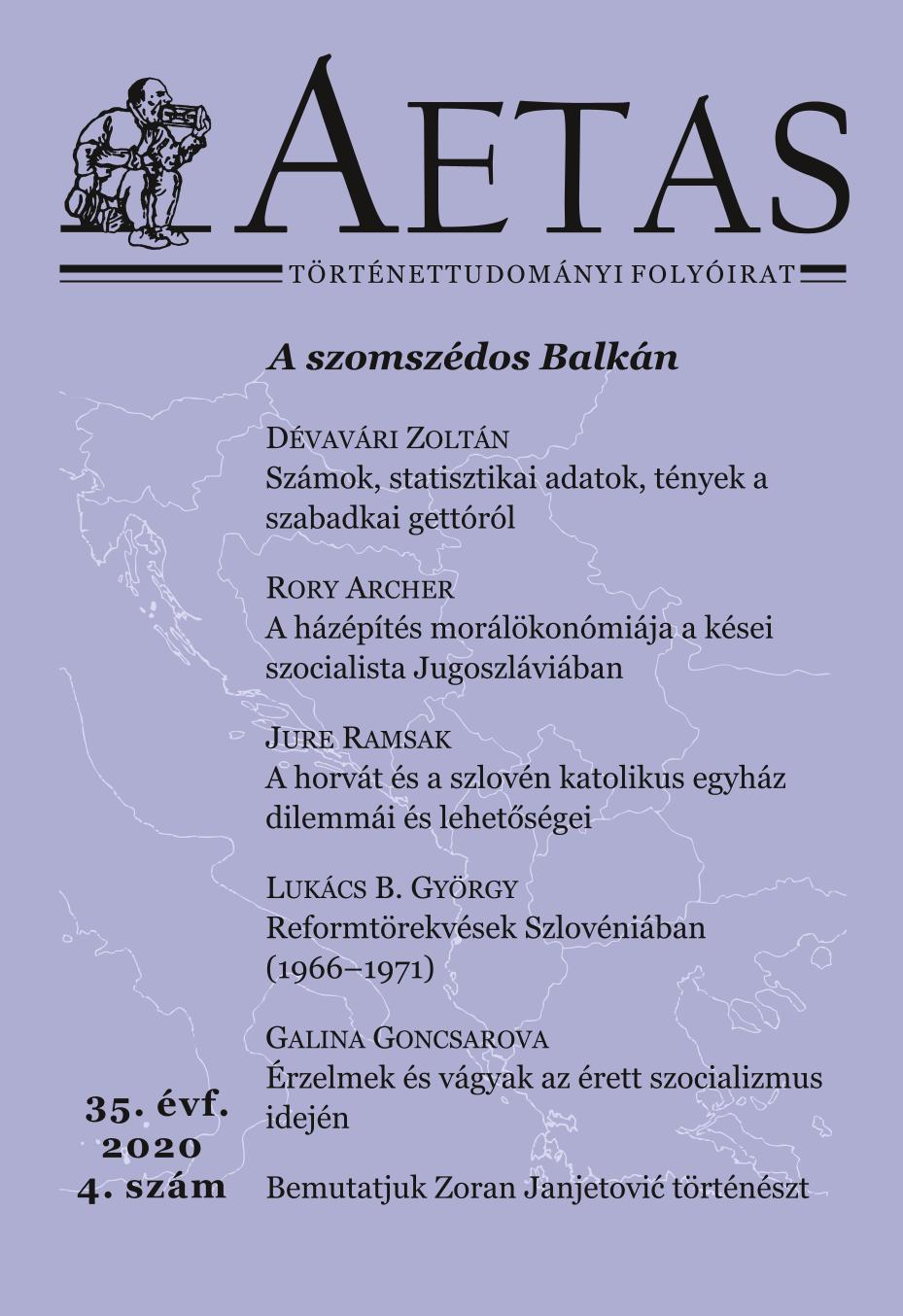
Based on previously unknown sources, the article presents the history of the Szabadka (today: Subotica) ghetto, which was established on April 27, 1944 and operated until June 16, 1944. It places great emphasis on the detailed reconstruction of the area and extent of the ghetto. The study also analyses the religious and social structure of the 2,740 people forced into the ghetto based on hitherto unknown documents. The study shows that numerically the largest social mass in the ghetto were homemakers, followed by students and (presumably small) traders. It is striking that employment sectors traditionally associated with Jews, such as journalism, newspaper publishing and printing, are barely even show up in this source. Also noteworthy are the minimal number of factory and plant owners, and the almost complete lack of bankers and bank officials. The almost total absence of teaching staff of any kind is particularly striking from the remaining data.
More...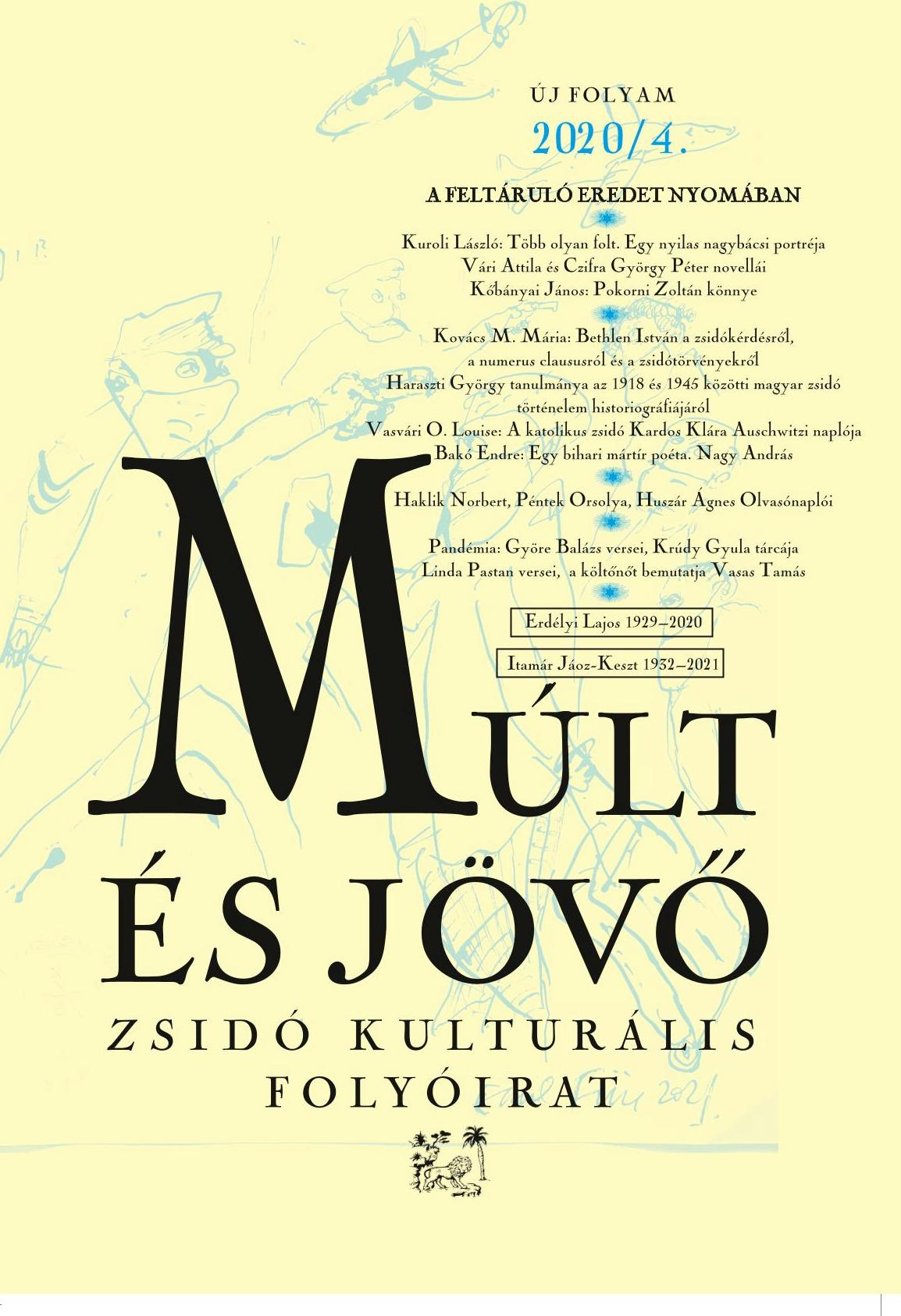
Biri mama deportálási emlékirata. „Haza, Istenem, csak hazasegíts engem!” Egy magyar zsidó asszony 1949-ben írt visszaemlékezése a deportálásra, Bergen-Belsenre, a pusztulás kapujában is kínzó honvágyra Kieselbach Galéria, Budapest, 2020. Erdélyi Ágnes: Arckép szavakból – Összegyűjtött írások Jaffa Kiadó, Budapest, 2020. 344.
More...
Zerkowitz Judit: Megtörtént. Minden szó igaz. Az élők a legkisebb nemzedék. Dobos Erzsébet kiadása. 2020. 358 l. Dr. Alex Sternberg: Recipes From Auschwitz. The Survival Stories of Two Hungarian Jews with Historical Insight. Published by Alex Sternberg. Woodsburgh, NY. 2020. 303 l.
More...